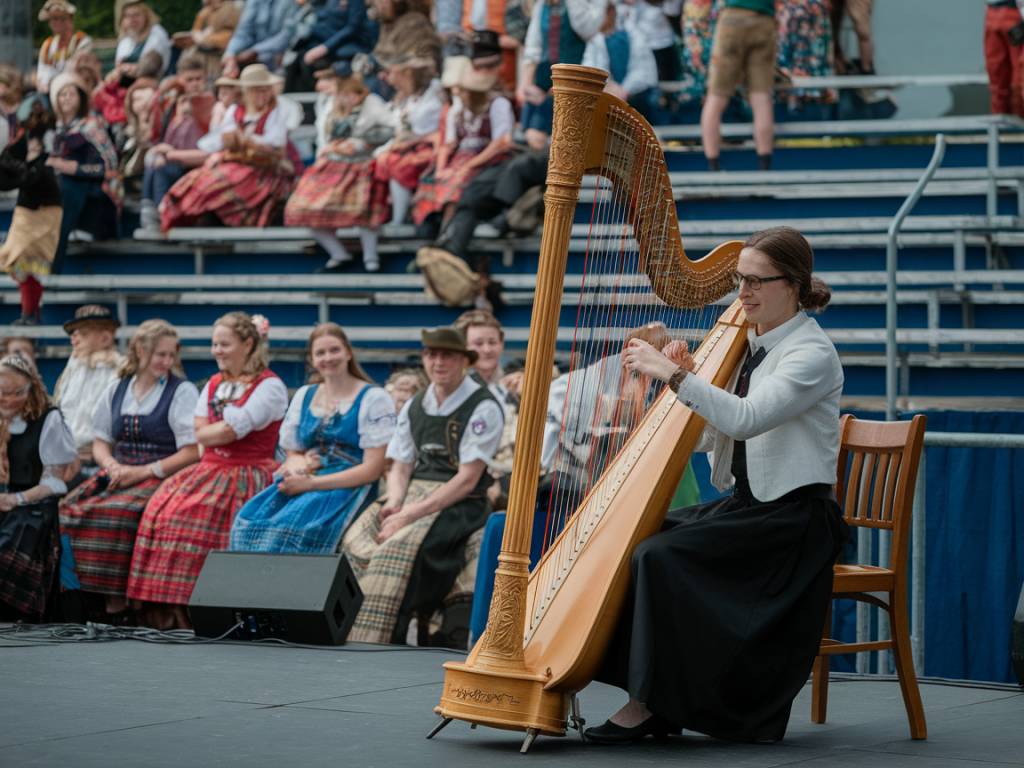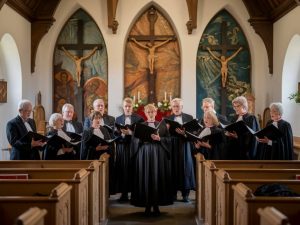The significance of the Eisteddfod in preserving Welsh traditions

The significance of the Eisteddfod in preserving Welsh traditions
The Spirit of Wales: What Is the Eisteddfod?
When seeking to understand the beating heart of Welsh culture, few traditions encapsulate its essence as vividly as the Eisteddfod. A celebration of language, music, and art, the Eisteddfod is more than just an event; it’s a cornerstone of national identity. But what does this time-honoured tradition truly represent, and why has it remained so crucial in preserving Welsh heritage through the centuries?
Rooted in history yet brimming with contemporary relevance, the Eisteddfod offers a fascinating lens through which to explore the resilience and adaptability of Welsh traditions. To understand its importance, let’s delve into the festival’s origins, its role in shaping today’s Wales, and its enduring power to bring communities together.
The Origins of the Eisteddfod: A Medieval Legacy
The Eisteddfod traces its lineage to medieval Wales, with its earliest recorded gatherings dating back to the 12th century. The word itself stems from the Welsh terms « eistedd » (to sit) and « fod » (be), translating roughly to « a gathering » or « to be seated. » These early Eisteddfodau (plural of Eisteddfod) were occasions where poets, musicians, and storytellers competed for recognition and patronage.
One of the most notable medieval Eisteddfodau was the one convened by Lord Rhys in 1176 at Cardigan Castle, considered a forerunner of the modern event. During this gathering, poets and musicians were invited to showcase their skills, with the finest performers receiving rewards. Imagine the sound of harp strings drifting across the castle courtyard, the passionate recitation of poetry in Cymraeg (Welsh), and the warm glow of torches against stone walls—a vivid snapshot of medieval culture.
Over centuries, these gatherings evolved from small-scale displays of artistry to larger, more formalized competitions. Yet, at their core, they’ve always aimed to safeguard the Welsh language and creative traditions. In turbulent times, especially during periods of English rule, the Eisteddfod offered a sanctuary—a reminder of what it meant to be Welsh.
Reviving a Tradition: The Modern Eisteddfod
In the mid-19th century, the Eisteddfod experienced a renaissance, transforming from a historical relic into a vibrant, modern celebration of Welsh culture. This revival was led by passionate figures determined to protect the Welsh language and culture amidst increasing industrialization and anglicization of Wales.
In 1861, the National Eisteddfod as we know it today was officially formed. This annual event, held in alternating locations across Wales, became a symbol of national pride. The spectacle includes competitions in poetry, prose, singing, dancing, and visual arts, all conducted in the Welsh language. Perhaps most movingly, the crowning of the Bard—the winner of the prestigious poetry competition—sits at the heart of the festival.
What continues to set the Eisteddfod apart is its ability to embrace change while remaining deeply anchored in tradition. Take, for instance, the integration of contemporary music and digital art categories alongside historic forms such as cynghanedd, a complex form of Welsh poetic meter. This creative fusion ensures the Eisteddfod appeals to both the old and the young, keeping it fresh for new generations.
The Eisteddfod’s Role in Safeguarding the Welsh Language
The Welsh language, or Cymraeg, has seen its share of challenges over the centuries, from being suppressed under English laws to grappling with declining speakers in modern times. Enter the Eisteddfod, a lifeline for the language and a catalyst for its revival. Many of the festival’s competitions require mastery of Cymraeg, making it not just a celebration of creativity but also an active arena for keeping the language alive.
Furthermore, the Eisteddfod inspires many attendees to engage with the language—whether through learning Welsh phrases, appreciating Welsh literature, or choosing to raise their own children bilingually. It reminds people that the language is not merely a relic of the past but a living, breathing entity with a future.
Welsh-medium schools, cultural workshops, and grassroots movements often sprout around the momentum created by each year’s Eisteddfod. Would Cymraeg have the same vibrancy today without the festival’s enduring influence? It’s hard to say, but the Eisteddfod’s role in its preservation cannot be overstated.
A Celebration of Community and Belonging
Beyond its cultural and linguistic impact, the Eisteddfod excels at one of life’s simplest yet most profound missions: bringing people together. Picture a bustling maes (festival field) filled with food vendors offering traditional Welsh cakes and bara brith, families enjoying children’s storytelling sessions, and friends sharing laughter over a pint of locally brewed beer.
The festival isn’t just for native Welsh speakers. People from diverse backgrounds and cultures are warmly welcomed, making the Eisteddfod a space of inclusion and shared experience. It’s almost impossible to immerse yourself in the event without feeling a deep connection to the land and its people.
Moreover, for the diaspora—Welsh people living abroad—the Eisteddfod can serve as a spiritual homecoming. Many plan trips back to Wales specifically to attend, reconnecting not just with their heritage but with a sense of belonging that transcends geography.
The Eisteddfod and Its Future
Given its rich history and ongoing relevance, what does the future hold for the Eisteddfod? Like Wales itself, the festival is evolving. Sustainability initiatives, such as reducing its environmental footprint through waste management and promoting local vendors, reflect its commitment to modern values alongside traditional ones.
Additionally, organizers are working to make the Eisteddfod more accessible in the digital age. For example, live streaming events and competitions allow diaspora communities and international audiences to participate remotely, expanding its reach far beyond Wales’s borders.
Though we can only speculate on how the Eisteddfod will continue to adapt in the years to come, one thing is certain: it remains a glorious celebration of Welsh identity, creativity, and resilience. Whether it’s your first time attending or your fifteenth, the festival’s ability to inspire awe and admiration never wanes.
An Invitation to Experience the Eisteddfod
Have you experienced the magic of the Eisteddfod for yourself? If not, why not make it a part of your next visit to Wales? Whether you’re drawn to the lyrical beauty of poetry, the soul-stirring harmonies of choral singing, or simply the joy of sharing in a community celebration, the Eisteddfod offers something for everyone.
And even if you can’t attend in person, there are countless ways to learn more and support its mission. Explore Welsh literature, teach yourself a few words of Cymraeg, or even stream parts of the festival online. Every small effort helps ensure that traditions like the Eisteddfod continue to thrive for generations to come.
So the next time you hear a harp being played, taste a slice of Welsh cake, or read a line of poetry in Cymraeg, remember the Eisteddfod. It’s not just a festival—it’s a living testament to the enduring power of Welsh culture and community.





